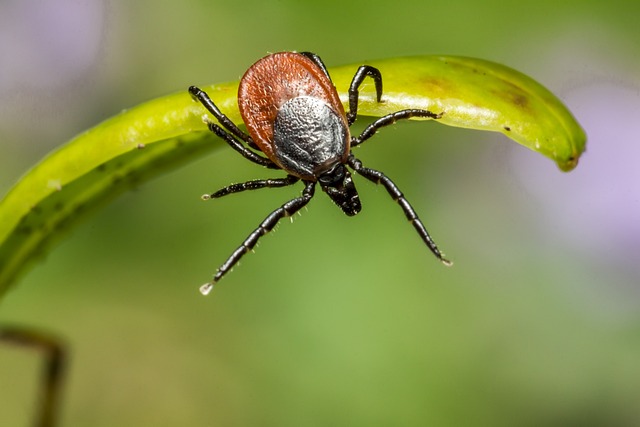Understanding tick ecology and behavior is crucial for developing humane and eco-conscious customized tick control plans. These strategies, tailored to each property's unique needs, include habitat management, regular landscaping maintenance, and the use of natural repellents or biopesticides. In public spaces, integrated pest management (IPM) techniques and strategic, seasonal interventions balance public health protection with biodiversity preservation. Preventative measures like maintaining a clean yard, removing tick habitats, and using eco-friendly repellents are vital for mitigating risks to both human health and the environment, ensuring safe outdoor enjoyment for all.
In recent years, managing ticks has evolved beyond traditional methods, incorporating humane and eco-conscious approaches. This shift is driven by growing awareness of these arachnids’ ecological role and their impact on both wildlife and human health. This article explores effective yet gentle strategies to combat ticks. We delve into understanding tick ecology and behavior, highlighting the importance of customized tick control plans tailored for homeowners. Additionally, we examine eco-friendly management in public spaces and explore preventive measures with natural repellents, offering a comprehensive guide to responsible tick control.
Understanding Tick Ecology and Behavior
Understanding Tick Ecology and Behavior is a crucial step in developing humane and eco-conscious approaches to their management. Ticks are external parasites that feed on the blood of mammals, birds, and sometimes reptiles and amphibians. They are particularly active during warmer months, when they seek hosts for feeding and reproduction. Knowing their life cycle, preferred habitats, and behavior allows us to implement tailored strategies for control.
Customized tick control plans consider the unique ecology of each area, focusing on non-toxic methods like habitat management, regular landscaping maintenance, and the use of natural repellents or biopesticides. These approaches aim to reduce tick populations without harming beneficial insects, birds, or other wildlife, ensuring a balanced ecosystem.
Customized Tick Control Plans for Homeowners
Many homeowners are now seeking humane and eco-conscious approaches to tick management, recognizing the importance of a balanced ecosystem within their own backyards. Customized tick control plans offer an effective solution, tailored to meet the unique needs of each property. These plans involve assessing factors like habitat, local wildlife, and human activity to implement targeted strategies. For instance, removing brush and dense vegetation can reduce tick habitats, while strategically placing traps or applying natural repellents can mitigate risks without harming beneficial insects or wildlife.
Homeowners can play a vital role in preventing tick-borne diseases by adopting these customized approaches. By understanding the interplay between their property and local ecosystems, they can contribute to a healthier environment while enjoying their outdoor spaces safely. This proactive approach ensures that both humans and nature thrive, making it a winning strategy for modern homeowners concerned about tick management.
Eco-Friendly Tick Management in Public Spaces
In public spaces, eco-friendly tick management requires a balanced approach that respects both human health and environmental sustainability. One effective strategy is to implement customized tick control plans tailored to specific areas. These plans often involve integrated pest management (IPM) techniques, such as habitat manipulation, biological controls, and strategic application of minimal toxic chemicals only when necessary. For example, maintaining well-trimmed grass and shrubbery can reduce tick habitats, while introducing natural predators like birds and spiders can help keep tick populations in check.
Customized tick control plans also leverage seasonal variations to minimize the use of chemical interventions. By understanding the peak active periods for ticks, authorities can time their treatments accordingly, reducing both costs and potential environmental impacts. Additionally, using traps and repellents that are specifically designed to target ticks without harming non-target species is another key component of these eco-conscious strategies. Such approaches not only protect public health but also preserve biodiversity in our shared outdoor spaces.
Preventive Measures and Natural Repellents
Preventative measures play a crucial role in managing ticks and their potential risks to both human health and the environment. Customized tick control plans tailored to specific regions and properties are an effective start. These plans often involve a combination of strategies, such as maintaining a clean yard, removing potential tick habitats like dense vegetation or wood piles, and regularly checking for ticks on oneself and pets after outdoor activities.
Natural repellents derived from essential oils and plants offer a gentle, eco-conscious alternative to chemical treatments. Compounds like DEET, neem oil, and cedarwood oil have been shown to repel ticks effectively when applied correctly. Utilizing these natural methods not only reduces exposure to potentially harmful chemicals but also promotes a more sustainable approach to tick management, contributing to overall environmental health.
In addressing tick management, a balanced approach that considers both humane treatments and ecological preservation is essential. By understanding tick behavior and ecology, we can develop tailored strategies like customized tick control plans for homeowners and implement eco-friendly practices in public spaces. Preventive measures, including the use of natural repellents, play a significant role in minimizing exposure to these parasites. Adopting these strategies not only protects human health but also supports the well-being of local ecosystems.
